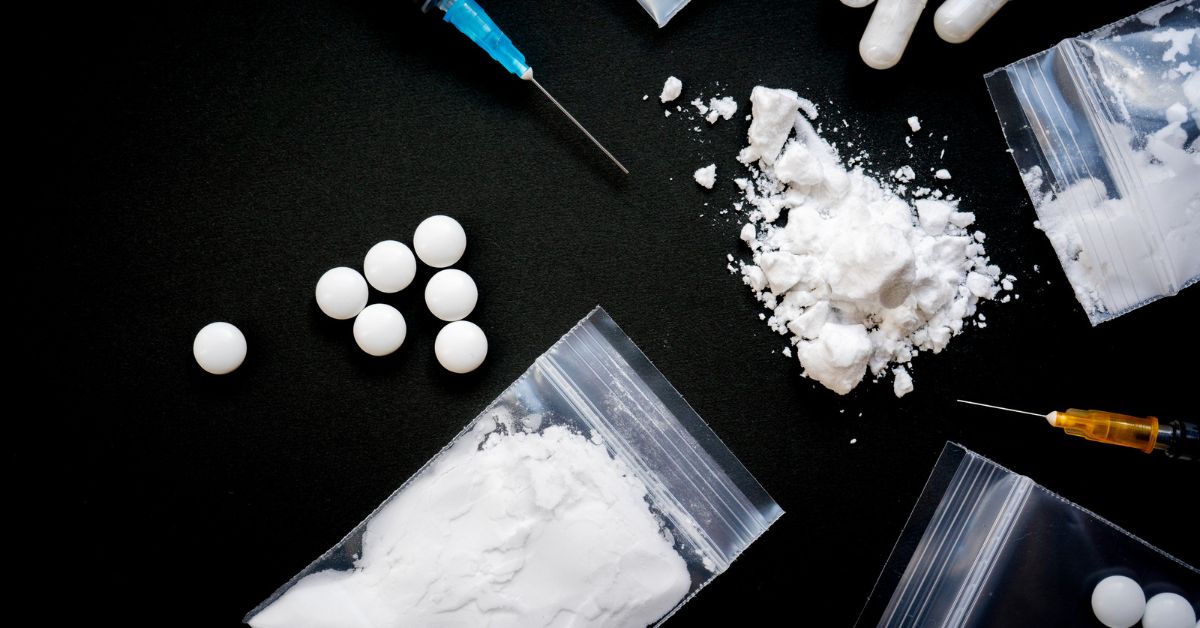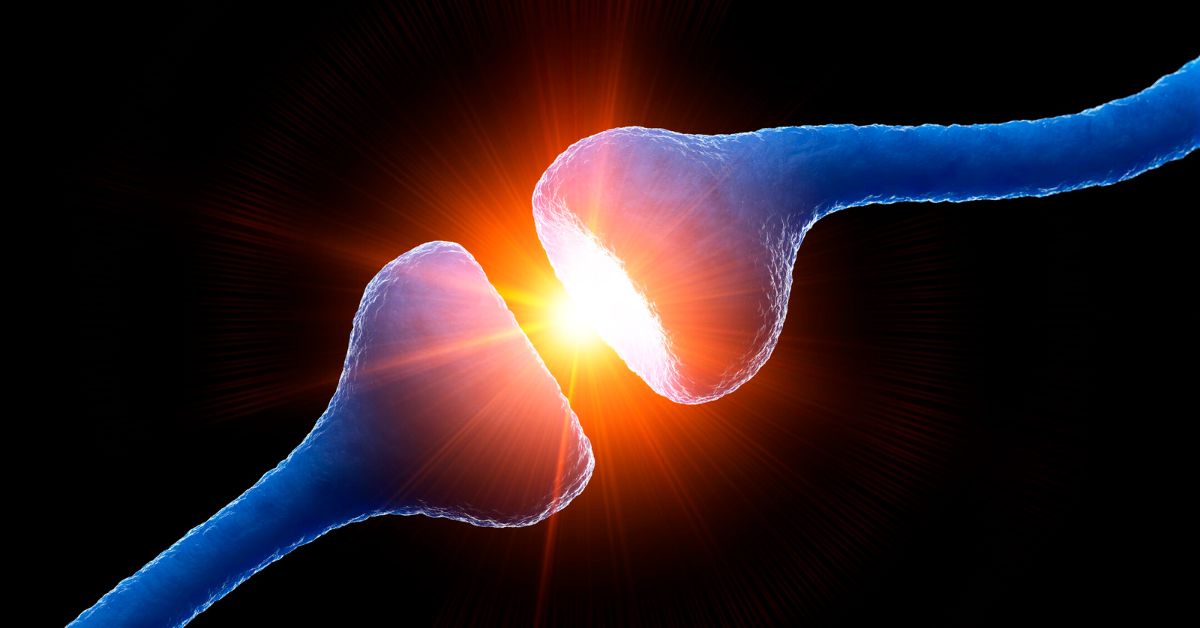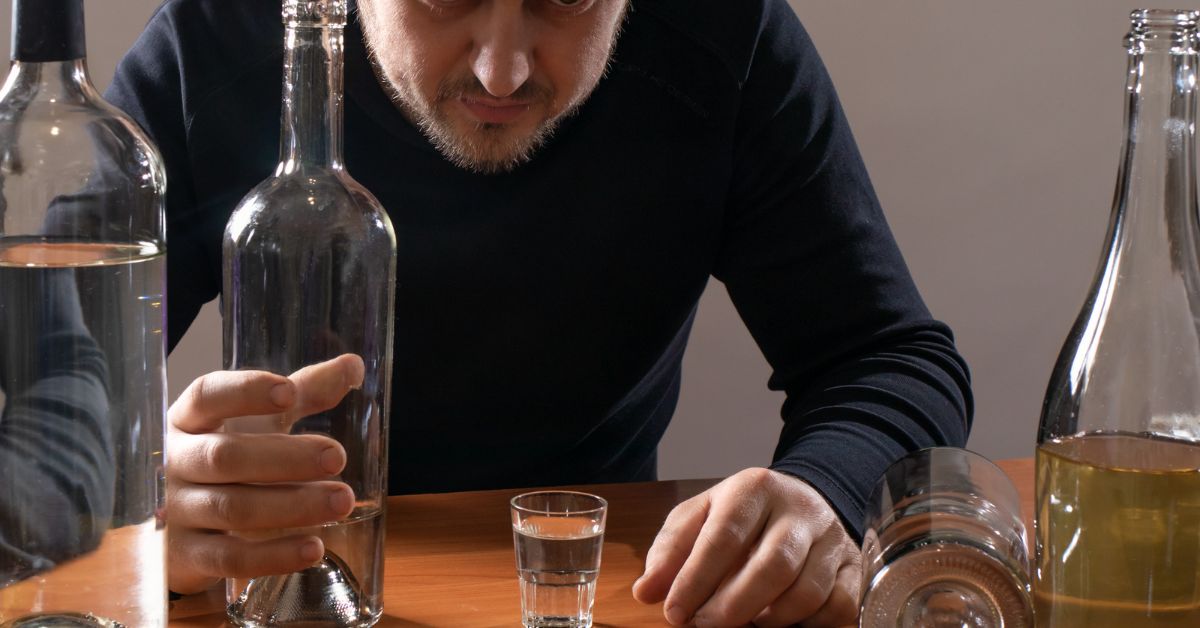Behind the closed door lies the world of drug addiction, a realm that many misunderstand and shy away from. It’s a place where misconceptions cast shadows, and the path forward for your loved one can seem unclear. But today, we hold the key to unlock that door.
As we step through, we’re entering a place of clarity and understanding, a place where we can embrace the truths about addiction and find hope in the journey toward recovery for someone we care for.
So, take a deep breath, and let’s unlock the door together.
How Drug Abuse and Addiction Can Develop: Risk Factors

When it comes to drug abuse and addiction, one of the most common questions from parents and loved ones is, “How does it all start?” It’s a valid question, and the answer is both complex and multifaceted. There isn’t a one-size-fits-all explanation, but rather a tapestry of interwoven factors of risk, personal experiences, and unique vulnerabilities that can contribute to the development of addiction. So, let’s take a closer look at this tapestry and gain a deeper understanding of how drug abuse and addiction can develop.
FREE: Get the 3 pieces of advice that helped me understand this disease of addiction
The Role of Factors in the Development of Addiction
Risk factors are like seeds that, when planted in the right conditions, can grow into drug abuse or addiction. While not everyone with these factors will go down that path, having certain ones can increase a person’s susceptibility. Let’s explore some key ones:
- Genetic Predisposition: Just like the color of your eyes or your height, your loved one’s genetic makeup can play a role in their susceptibility to addiction. Researchers have found that genetics can account for about 40-60% of a person’s vulnerability to addiction.
- Environmental Factors: Their environment can also shape their experiences and exposure to drugs. Here are a few to consider:
- Family History of Addiction: Growing up in a family where drug or alcohol abuse is prevalent can normalize the behavior and increase the likelihood of experimentation.
- Peer Pressure: The influence of friends and peers can be powerful, especially during adolescence when the desire to fit in is strong.
- Exposure to Drugs at an Early Age: Early exposure to substances can lower inhibitions and increase the risk of developing an addiction later in life.
- Psychological Factors: Their mental and emotional well-being can impact their choices and coping mechanisms. Let’s look at some psychological factors:
- Mental Health Disorders: Conditions such as anxiety, depression, or ADHD can result in a higher risk of self-medicating with drugs or alcohol.
- Emotional Distress: Trauma, loss, or overwhelming stress can lead to drug abuse as a way of coping or escaping.
- Coping Mechanisms: People with limited healthy coping strategies may turn to alcohol or drug addiction as a way to manage difficult emotions.
The Difference Between Drug Abuse and Addiction
It’s important to note that drug abuse and addiction are not the same thing. Drug abuse involves using a drug, whether it’s taking a prescription medication in a way that wasn’t prescribed or using illegal drugs. It’s often characterized by sporadic or risky behaviors, such as binge drinking or using drugs while driving.
Addiction, on the other hand, is the inability to stop using any alcohol or drug, despite all the bad things that can happen.
It goes beyond behavior and involves changes in the neurobiological reward system. People with addiction may continue to use drugs even when it harms their relationships, health, and overall well-being. They may also experience withdrawal symptoms when they try to quit.
In essence, drug abuse can be a stepping stone to addiction, but not everyone who abuses drugs will become addicted. It’s the combination of genetic, environmental, and psychological factors that can contribute to the transition from abuse to addiction.
Types of Drugs and Their Effects: Understanding Drugs

As we explore the landscape of addiction, it’s important to recognize that there are different types of drugs, each with its own effects on the brain and body. From stimulants that rev up your system to depressants that slow things down, these psychoactive cycles of addiction can have both short-term and long-term impacts.
Let’s take a closer look at the various categories of drugs and what they can do:
| Category of Drugs | Effects on the Brain and Body | Short-Term Effects | Long-Term Effects |
|---|---|---|---|
| Stimulants (e.g., cocaine, methamphetamine) | Increase alertness, attention, and energy; elevate heart rate and blood pressure | Euphoria, increased energy, talkativeness | Addiction, heart problems, cognitive deficits |
| Depressants (e.g., benzodiazepines, alcohol) | Slow down the central nervous system; induce relaxation and sedation | Relaxation, drowsiness, lowered inhibitions | Addiction, memory problems, liver damage |
| Opioids (e.g., heroin, prescription painkillers) | Relieve pain; create feelings of pleasure and well-being | Pain relief, euphoria, drowsiness | Addiction, risk of overdose, constipation |
| Hallucinogens (e.g., LSD, psilocybin) | Alter perception, thoughts, and feelings; induce sensory experiences | Hallucinations, altered perception, emotional shifts | Persistent hallucinations (rare), flashbacks |
| Cannabis (e.g., marijuana) | Affect mood, relaxation, and sensory perception | Relaxation, altered perception, increased appetite | Cognitive impairment, the potential impact on mental health |
UPDATED: Discover the 3 life-changing things about addiction I wish I knew years ago
- Stimulants (e.g., cocaine, methamphetamine): These are like pressing the gas pedal in the brain. They increase alertness, attention, and energy, but they can also spike the heart rate and blood pressure. While they may provide a temporary high or sense of euphoria, these can also lead to anxiety, paranoia, and even heart attack or stroke.
- Depressants (e.g., benzodiazepines, alcohol): On the flip side, depressants are like hitting the brakes. They slow down the central nervous system, leading to relaxation and reduced tension. However, they can also impair coordination, judgment, and memory. Over time, heavy use of depressants can disrupt sleep patterns and contribute to depression.
- Opioids (e.g., heroin, prescription painkillers): These are potent pain relievers that can create feelings of pleasure and well-being. But there’s a dark side, the risk of overdose and respiratory failure. They are highly addictive, and withdrawal can be intensely uncomfortable, making it challenging to stop using.
- Hallucinogens (e.g., LSD, psilocybin): Hallucinogens alter perception, thoughts, and feelings, often leading to vivid and unpredictable sensory experiences. While some seek out these “trips,” hallucinogens can also cause panic, confusion, and risky behaviors.
- Cannabis (e.g., marijuana): Cannabis is known for its relaxing and mood-altering effects. It can also impair memory, coordination, and reaction time. While it’s often viewed as less harmful, heavy cannabis use can impact mental health and motivation.
Remember, the effects of drugs are influenced by individual factors such as dosage, frequency of use, and a person’s physical and mental health. While some may experiment with drugs without developing an addiction, others may be more vulnerable to the grips of dependency. In our next segment, we’ll explore how drug addiction occurs and the changes it brings to the brain.
How Does Drug Addiction Occur

Understanding how drug addiction occurs requires delving into the inner workings of the brain. You see, the brain is a complex organ with intricate pathways that play a role in thoughts, behaviors, and emotions. One of these pathways (the reward system) is at the heart of addiction. Let’s explore how drugs impact this system and how the transition from someone with an addiction.
The Impact of Drugs on the Brain
- Effects on Neurotransmitters and Reward Pathways: When a person uses drugs, they disrupt the brain’s natural balance of neurotransmitters, chemicals that transmit signals between nerve cells. Drugs can either mimic these or alter their release and reuptake, leading to a flood of signals in the neurobiological reward system.
- Release of Dopamine and the Experience of Pleasure: Dopamine is a key player in the reward system. It’s associated with pleasure and motivation, and it’s released when we engage in activities we enjoy. Drugs, however, can trigger a surge of dopamine, creating an intense high that reinforces drug-seeking behavior.
The Transition from Drug Use to Addiction
- Tolerance and the Need for Increased Dosage: Over time, the brain adapts to the presence of drugs, leading to a phenomenon called tolerance. As a result, a person may need higher doses to achieve the same effect, increasing the risk of overdose and addiction.
- Withdrawal Symptoms and Physical Dependence: As the body becomes accustomed to the drug, removing it can lead to anxiety, nausea, and agitation. Physical dependence makes quitting difficult and can perpetuate drug use.
- Psychological Dependence and Compulsive Drug-Seeking Behavior: Beyond physical dependence, addiction involves psychological factors. The intense cravings, the loss of control, and the inability to resist the urge to use drugs despite negative consequences are hallmarks of addiction.
To sum it up, addiction is a hijacking of the brain’s reinforcement system. But amidst the challenges, there is hope. Recovery is achievable, and with the right support and treatment program, your loved one can pave the way for a brighter, drug-free future. In the next section, we’ll look at risk and protective factors that play a role in addiction.
GET: The 3 things that actually "allowed" me to help my son (and regain control again)
Risk and Protective Factors for Drug Addiction

In the realm of addiction, risk, and protective factors are like the two sides of a scale, each influencing a person’s likelihood of developing addiction. While several factors can tilt the scale toward addiction, protective factors can act as counterweights, helping to reduce the risk. Let’s examine both:
Factors that May Increase the Likelihood of Developing Addiction
- Family History: Genetics and family environment can increase someone’s vulnerability to addiction.
- Early Exposure: Experimenting with drugs at a young age can impact brain development and increase susceptibility.
- Co-occurring Disorders: Mental health conditions, such as anxiety or depression, can lead a person to self-medicate with addictive drugs.
Protective Factors that Can Reduce the Risk of Addiction
- Supportive Relationships: Strong connections with family, friends, and mentors can provide stability and support.
- Healthy Coping Strategies: Encouraging your loved one to manage stress and emotions through positive outlets can reduce reliance on addiction medicine.
- Education and Awareness: Sharing knowledge about the risks and effects of drugs can empower them to make informed choices.
It’s important to remember that these factors don’t determine destiny, and protective factors don’t guarantee immunity. However, by understanding these factors, you can take steps to build resilience and promote healthy choices on your close one’s journey toward well-being.
The Role of Alcohol in Addiction

Among the misuse of drugs that can lead to addiction, alcohol holds a unique place. It’s a socially accepted and widely available concept with greater risk as its use becomes more common, yet it’s also one that can have a powerful grip on the lives of those who become addicted, including your beloved one. Let’s delve into the role of alcohol in addiction and unravel the intricate dynamics at play.
How Does Alcohol Cause Addiction
- The Effect of Alcohol on the Brain’s Reward System: Alcohol affects your loved one’s neurobiological reward pathway by increasing the release of dopamine, a part of the brain that links to pleasure and reinforcement. This surge creates a pleasurable “high” that can motivate them to consume alcohol repeatedly.
- Interactions with GABA and Glutamate: Alcohol also interacts with other chemical transmitters, including GABA (gamma-aminobutyric acid) and glutamate. It enhances the inhibitory effects of GABA and reduces the excitatory effects of glutamate, leading to feelings of relaxation, sedation, and lowered inhibitions.
FREE: Get the 3 pieces of advice that helped me understand this disease of addiction
How Does Alcohol Addiction Occur
- The Cycle of Alcohol Use and Dependence: The journey to alcohol addiction often involves a cycle of increasing use and growing dependence. What may begin as social or occasional drinking can gradually escalate, leading to a pattern of heavy and frequent consumption.
Factors Contributing to the Development of Alcohol Addiction:
- Genetic Susceptibility: Genetics play a role in an individual’s vulnerability to alcohol addiction, influencing how their body metabolizes alcohol and how their brain responds to it.
- Social and Environmental Influences: Cultural norms, peer pressure, and the availability of alcohol can shape someone’s drinking behaviors and attitudes.
- Co-occurring Mental Health Conditions: Individuals with mental health disorders, such as anxiety or depression, may use alcohol to self-medicate or cope with symptoms.
How Does Alcohol Lead to Addiction
The Stages of Alcohol Addiction:
- Initial Experimentation and Social Drinking: The initial stage often involves curiosity and experimentation with alcohol in social settings and is a precursor to developing a substance use disorder. At this stage, drinking is typically infrequent and may be influenced by peer groups or a desire to fit in.
- Increased Frequency and Quantity of Alcohol Use: As alcohol use progresses, individuals may begin to drink more frequently and in larger quantities. They may start to experience negative consequences, such as hangovers, relationship strain, or work-related issues.
- Tolerance and Withdrawal: Over time, individuals may develop tolerance, requiring more alcohol to achieve the desired effects. They may also experience symptoms such as tremors, irritability, or insomnia when they stop drinking.
- Loss of Control and Compulsive Drinking: In the advanced stages of alcohol addiction, individuals may lose control over their drinking and engage in compulsive, uncontrollable alcohol consumption. Their lives may become increasingly centered around obtaining and consuming alcohol, often to the detriment of other aspects of their lives.
Alcohol addiction is not so simple condition that can impact every area of a person’s life. It’s important to recognize that addiction is not a sign of weakness or a lack of willpower; rather, it’s a chronic brain disorder that requires support, understanding, and compassionate care. Recovery is possible, and with the right resources and tools, your loved one can embark on a journey of healing and rediscover the joy and fulfillment of a life free from addiction.
Warning Signs and Symptoms of an Addict

Recognizing the warning signs of addiction in your close ones is a critical step toward seeking help and finding the path to recovery. It’s important to know that addiction can manifest in different ways: behavioral, physical, and psychological indicators may all provide clues. Here are some key signs to look out for:
Some examples of behavioral indicators include:
- Neglecting responsibilities at home, work, or school
- Withdrawing from social activities and hobbies
- Engaging in secretive or deceptive behavior
- Continuing to use substances despite negative consequences
Then there are physical indicators such as:
- Changes in appearance, such as weight loss or lack of hygiene
- Physical signs of substance use, such as bloodshot eyes or slurred speech
- Experiencing higher-risk symptoms when attempting to quit
And to finish, the psychological indicators include:
- Mood swings or unexplained changes in behavior
- Increased anxiety, irritability, or depression
- Intense cravings and preoccupation with obtaining and using substances
Remember, you’re not alone. If you recognize any of these signs in your loved one, it’s okay to seek support. Addiction is a complex and treatable condition, and reaching out for help is a courageous and empowering step toward healing.
UPDATED: Discover the 3 life-changing things about addiction I wish I knew years ago
The Consequences of Drug and Alcohol Addiction

As parents and loved ones of someone with addiction, it’s crucial to understand the wide-ranging impact addiction has on the individual, as well as those around them. The consequences of this addiction are varied and profound, affecting physical health, mental well-being, and social and occupational functioning. Let’s explore some of these consequences and their ripple effects:
The Impact of Addiction on Physical Health
- Damage to Organs and Systems: Substance abuse can harm vital organs, including the liver, heart, lungs, and brain. Long-term use can lead to chronic conditions such as liver disease, cardiovascular disease, and respiratory problems.
- Risk of Overdose and Death: Overdose is a life-threatening risk associated with substance use, particularly with opioids and other potent drugs. Accidental overdose can result in respiratory failure, coma, and death.
The Impact of Addiction on Mental Health
- Anxiety, Depression, and Mood Disorders: Addiction often goes hand in hand with mental health challenges. Substance use can exacerbate symptoms of anxiety and depression and contribute to the development of mood disorders.
- Cognitive Impairment and Memory Loss: Chronic substance use can impair cognitive functioning, leading to difficulties with memory, attention, and decision-making.
The Impact of Addiction on Social and Occupational Functioning
- Strained Relationships with Family and Friends: Addiction can take a toll on personal relationships, leading to mistrust, conflict, and isolation. Close ones may struggle to understand and cope with the effects of addiction.
- Work and Financial Problems: Addiction can impact work performance and attendance, leading to job loss and financial instability. Individuals may also face legal issues related to substance use.
The consequences of addiction underscore the importance of seeking help and support for your loved one. While the journey may be challenging, recovery is possible. With the right treatment, resources, and support, they can overcome addiction and reclaim their lives…rediscovering hope, health, and fulfillment along the way.
The Stigma of Substance Use Disorder

Stigma (a cloud of shame and judgment) often surrounds the topic of addiction, casting shadows on someone you care for who is seeking help and recovery.
Misconceptions and societal attitudes can paint addiction as a moral failing or a lack of willpower, rather than a complex brain disorder.
The impact of stigma is profound; it can create barriers for your loved one to seek help, erode self-worth, and fuel feelings of isolation.
Yet, change is possible.
By challenging misconceptions, promoting empathy, and fostering open dialogue, you can create an environment of understanding and acceptance for your close one…an environment where hope and healing can flourish without judgment.
GET: The 3 things that actually "allowed" me to help my son (and regain control again)
Prevention and Education

When it comes to drug and alcohol addiction, prevention and education are powerful tools in safeguarding your dear ones and communities from the challenges of addiction. By promoting awareness and building resilience, you can create a foundation for making informed choices and fostering well-being. Here are some key strategies for preventing addiction:
- Education and Awareness Programs: Providing accurate information about the risks and effects of substance use empowers individuals to make informed decisions. Encourage schools, workplaces, and community organizations to host educational programs to raise awareness and dispel myths.
- Building Resilience and Coping Skills: Equipping your loved ones with healthy coping strategies and emotional regulation skills can reduce reliance on substances as a means of coping with stress or challenges. Mindfulness, stress management, and social support are valuable components of resilience.
- Early Intervention: Early identification and intervention for individuals at risk of substance use can help prevent the escalation of drug or alcohol abuse. Supportive counseling, family involvement, and positive reinforcement can play vital roles in early intervention efforts.
By prioritizing prevention and education, one can create a ripple effect of positive change; one that extends beyond your loved ones to families, communities, and society as a whole.
Drug and Alcohol Addiction Treatment and Recovery

The journey to recovery from addiction is a deeply personal and transformative one. It’s a path paved with courage, resilience, and hope, leading to a renewed sense of purpose and fulfillment. Though the road may have its twists and turns, the destination is one of healing and self-discovery. Let’s explore some of the approaches to addiction treatment and the essential components of recovery:
Approaches to Addiction Treatment
- Behavioral Therapy and Counseling: Behavioral therapy is a cornerstone of treatment. Through individual or group counseling, your beloved one can explore the underlying factors contributing to their addiction, develop healthier coping mechanisms, and set goals for lasting change. Different modalities, such as cognitive-behavioral therapy (CBT) or motivational interviewing, can be tailored to each person’s needs.
- Medication-Assisted Treatment: Medication-assisted treatment (MAT) combines behavioral therapy with medications to support recovery from opioid, alcohol, or nicotine addiction. Medications can help alleviate their addiction to drugs by reducing cravings and stabilizing brain chemistry.
- Support Groups and Peer Support: The power of connection and shared experience can be invaluable in recovery. Support groups like Alcoholics Anonymous (AA) or Narcotics Anonymous (NA) provide a safe space for them to connect, share their stories, and find encouragement from peers on similar journeys.
FREE: Get the 3 pieces of advice that helped me understand this disease of addiction
The Importance of Addressing Underlying Issues
- Treating Co-occurring Mental Health Conditions: Addiction often co-exists with mental health disorders, such as anxiety or depression. Addressing these conditions through integrated treatment is essential for holistic healing and relapse prevention.
- Addressing Social and Environmental Factors: Recovery also involves addressing external influences, such as relationships, living environments, and social networks. Supportive and drug-free surroundings can foster sustained recovery.
The journey to recovery is a dynamic process, and maintaining sobriety requires ongoing commitment, support, and self-care. It’s important to remember that recovery is not a linear path; setbacks may occur, but they don’t define your dear one. Each step, each choice, and each day brings them closer to the life they envision for themselves…one filled with hope, possibility, and vibrant well-being.
Embracing Hope and Resilience in the Journey to Recovery

As we reach the end of our exploration, let’s pause and reflect on the profound journey of recovery for your dear one, a journey illuminated by hope and resilience. Addiction may be complex, but it doesn’t define them.
Your loved one is so much more than they may think. They are someone with strength, courage, and potential.
With every step they take, they’re redefining their story, weaving a new narrative of healing and transformation.
So, whether they’re just beginning or are well on their way, know that they’re not alone. We’re here, cheering you on as you support and embrace the possibilities of a brighter, more fulfilling tomorrow. Let’s keep moving forward, together.
UPDATED: Discover the 3 life-changing things about addiction I wish I knew years ago
Frequently Asked Questions About How Drug Addiction Works
How does addiction work in the brain?
Addiction works in the brain by hijacking its reward system and altering neurotransmitter activity. Drugs and alcohol can increase the release of dopamine (the part of the brain that’s associated with pleasure), creating a reinforcing cycle of drug use and craving. As addiction progresses, the brain undergoes structural and functional changes, leading to compulsive drug-seeking behavior and impaired decision-making.
Which part of the brain causes addiction?
The key brain region involved in addiction is the reward system, particularly the nucleus accumbens and the ventral tegmental area (VTA). The nucleus accumbens is a brain region that processes reward and pleasure, while the VTA is responsible for releasing dopamine. Together, these areas form a critical part of the neurobiological reward pathway, which becomes dysregulated in addiction.
What’s the process of addiction?
The process of addiction involves a transition from initial drug use to compulsive and uncontrolled drug-seeking behavior. Initial usage may trigger a surge of dopamine, creating a pleasurable “high.” Over time, the brain adapts to the presence of drugs, leading to tolerance and the need for higher doses. As addiction develops, individuals may experience a loss of learning and memory, a strong desire, and a loss of control over drugs, ultimately resulting in physical and psychological dependence.
